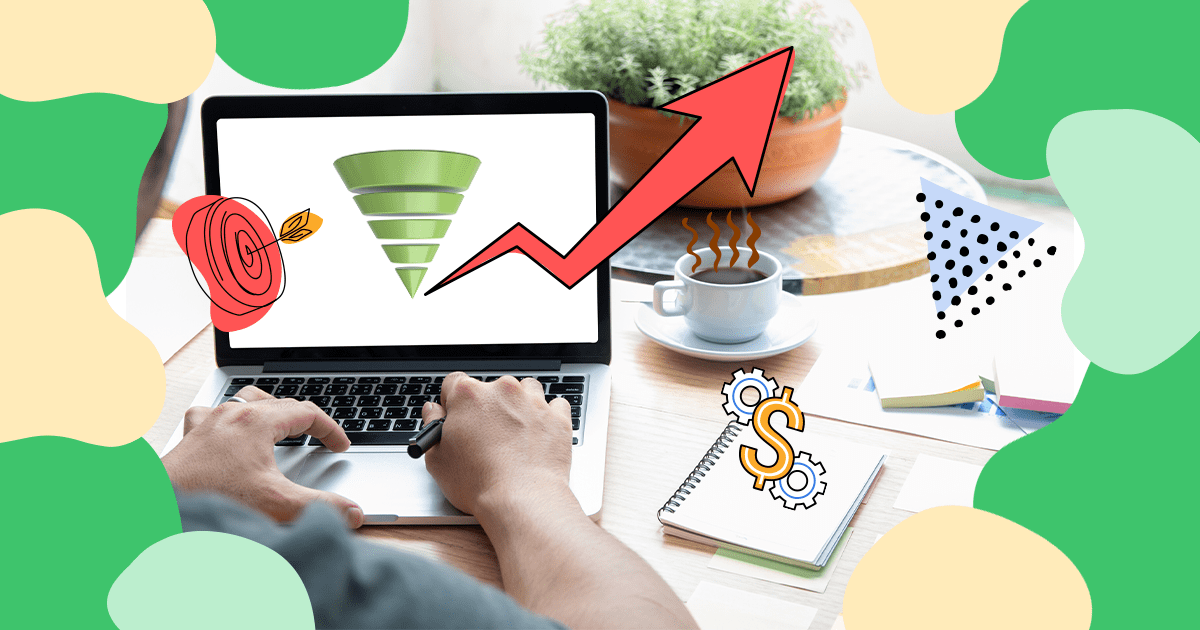The digital e-commerce universe has become one of the most competitive marketplaces around. According to Adobe, an estimated 26 million e-commerce websites are doing business today.
If your business has tried an e-commerce website and failed, the problem might not be your brand or products. It might be the tools you used to build and maintain the virtual store. Today’s consumers are looking for more than just some nice product pictures and a blurb about the company.
They want to buy from websites that are easy to use and navigate. They look for key features such as search engines, chat customer service, options, and state-of-the-art security. According to Tech Jury, mobile buyers make up 67.2% of all online purchases, so they want responsiveness, too.
Setting up and managing a successful e-commerce website is a big hill to climb, but it is necessary. Brands must meet customers where they spend their time, and that is online. E-commerce websites generated 856.8 billion dollars in revenue in 2022.
An e-commerce platform is an effective tool to help you find success in the digital marketplace. This article will discuss e-commerce platforms, their use, and why you need one.
Decoding e-Commerce Platforms: A Comprehensive Guide
A practical place to start is with a basic definition.
What is an e-commerce platform?
An e-commerce platform is software that facilitates the process of buying and selling goods and services online. It is an application that manages a business’s websites, online sales, and omnichannel marketing.
What does an e-commerce platform do?
It is responsible for coordinating the consumer’s relationship with the online seller.
If that all sounds vague, it’s because different e-commerce platforms offer additional features. At the basic level, this software will:
- Allow site users to search for products
- Provide a digital shopping cart
- Handle the payment process
Many platforms do much more than that, though. They might offer data analytics, for example. When shopping for an e-commerce platform, you need to find one that fits the company’s budget. At the same time, it must offer the features necessary to allow your customers to order products and services seamlessly.
Understanding the Role of e-Commerce Platforms in Your Business
An e-commerce platform serves as the operational hub for online sales and marketing. It provides the basic infrastructure to run an online business.
The ultimate goal is to streamline the process of selling products and services where many people shop. Businesses could do this without an e-commerce platform, but the process would be more difficult. The administrator would have to handle the components of the virtual store individually, often using third-party vendors. For example:
- Inventory management
- Payment gateways
- Customer service
- Product fulfillment
- Content marketing
These are pieces that fit together to make an e-commerce website work. They are necessary components available individually, but an e-commerce platform puts them under one roof to simplify the management.
Key Features to Look for in an e-Commerce Platform
Choosing the right e-commerce platform can be a challenge. Finding a platform that fits your business needs will allow you to:
- Control costs – This includes the set-up fees and any maintenance costs.
- Allow growth – Once the websites are up and running, the next step is to allow them to grow. Some platforms make that difficult or expensive.
- Enhance customer engagement – Many brands make this a primary focus because engagement can bring a customer back repeatedly.
- Prioritize customer service – Providing customer support means better conversions and enhanced loyalty.
What are some key features to look for on an e-commerce platform?
Hosting and platform type
There are two types of platforms: self-hosted and cloud-based. With a self-hosted or on-premise platform, you do much of the legwork. For example, you would need to find a host for the website, manage the installation, and do the administration. That will give you more control but requires more time and technical knowledge. One person would be responsible for things like source coding and software updates.
A cloud-hosted platform means you work via the cloud. Cloud-based platforms can be further broken down as SaaS or PaaS. A SaaS platform such as Shopify is all-inclusive. You simply pay for a website, provide the content, and choose a look for the site. You have access to additional apps, themes, and data analytics.
A PaaS cloud-based platform adds a hardware element. It falls between shared hosting and SaaS. The platform manages the operating system and software. You provide content, some code, and databases. A PaaS platform separates the business from the server administration.
The significant difference between the two is the coding. With SaaS, you don’t provide custom source code. It is more of a WYSIWYG option. PaaS gives you more control over the coding aspect.
Pricing
Pricing is an obvious consideration. You can expect most platforms to have a monthly fee. The exception to this might be open-source. The cost varies from platform to platform and may differ based on the features you choose and how much bandwidth and storage you require.
Integrations
Businesses must think ahead when choosing a platform. What systems might you want to integrate with the e-commerce platform initially and in the future? Some options would include:
- Accounting
- Email marketing
- Shipping
- Payment
- Marketing
- Customer loyalty programs
Not all platforms allow for integrations.
Extensibility
A typical e-commerce platform provides the basis necessary to launch a website. They often come with ready-made integrations. You might need a more advanced PaaS platform if you want more than that.
Scalability
The other side of that coin is scalability. You want to be able to grow your website or scale it down during slower seasons.
Administration
How easy is it to add or delete products or establish inventory counts? What about changing prices? How do you upload images? You need to know how much effort it takes to make changes to your website.
Comparing Websites and e-Commerce Platforms: What Sets Them Apart?
E-commerce platforms and websites are terms sometimes used interchangeably, but they are quite different.
About an e-commerce platform
An e-commerce platform is a software-based platform that lets businesses sell products and services online. There are three main styles:
- Open-source – gives you complete access to the source codes and more control over how shopping is done through the site. Some examples of open-source platforms include Square Online, WooCommerce, and Joomla.
- SaaS is a cloud–based platform that is an all-in-one service. The platform handles everything; the business chooses a theme and provides the information. Examples of SaaS platforms include Shopify Plus and Salesforce Commerce Cloud.
- Headless – A headless platform separates the back end from the front end of customer-facing operations. You create the website using programs like WordPress or Drupal. The e-commerce platform provides cart and payment services. Examples of headless platforms include Spryker and BigCommerce.
That is different from an e-commerce website.
About an e-commerce website
An e-commerce website is any site with e-commerce features. In other words, any website where you can purchase something off it.
Many brands allow you to create an e-commerce website without the versatility of an e-commerce platform. They may offer a plug-in that serves as a payment gateway to allow for purchasing.
Having a basic website lacks the capabilities of an e-commerce platform, though. It won’t be scalable, for instance, or customizable. It will likely have very few features to choose from. The theme will be set in stone with no room for changes.
A simple website may be enough for small businesses with little online sales. For many companies, though, it will be too limiting.
Choosing the Right e-Commerce Platform: A Step-by-Step Process
The first step is to determine what feature the business needs. The platform should meet your needs for:
- Inventory size and management
- Payment methods
- Level of support
- Integration
Next, focus on your budget. Many e-commerce platforms offer pricing structures based on things like storage and bandwidth use. If you find one that meets your needs, see what pricing plan you can afford.
Ease of use
This applies not only to the business but also to its customers. How easy is the client interface to use? What about the website navigation and purchasing system? Is it easy to navigate?
Search for reviews on the internet to see what current and past users say about the platform. This will give you insight into whether it is the right pick for your brand.
Payment security
This is another consideration critical to both the business and the customers. Find out what payment methods the platform supports and what security features they offer. For example, is there a two-factor authorization system in place?
Does it meet your scalability requirements?
Perhaps you amp up your product selection during the holidays and then scale back? Is there room to grow on this platform?
Customer support
If you have questions, is there customer service available? Do you talk to a person? Does the company display a phone number to call?
Also, consider whether there is a contract you must sign to get an optimal price. For example, is the billing done yearly or monthly? Is there a choice between them? If so, you can test the platform for a month and then opt for the less expensive annual billing if you are happy.
Exploring the #1 e-Commerce Platform in 2024: What Makes It Stand Out?
For small and medium-sized businesses, the best e-commerce site is likely Shopify. Shopify is scalable and provides features that come in handy, although you might have to pay more for them. For instance, Shopify Fulfillment offers faster and more affordable shipping but comes at an added cost.
Shopify has a number of these ala carte features. That allows businesses to pick and choose what they need instead of paying for something they won’t use.
The Top 15 e-Commerce Platforms for Your Online Store
If Shopify doesn’t fit your needs, here are 15 others that might:
- Wix
- BigCommerce
- Adobe Commerce
- WooCommerce
- Squarespace
- Big Cartel
- Square Online
- Shift4Shop
- Volusion
- OpenCart
- Hostinger Site Builder
- PrestaShop
- AbanteCart
- Ecwid
- Salesforce Commerce Cloud
Building Your Online Store: Best Practices and Strategies
The top priority for online and offline businesses should be the customer. Create a website that is easy to navigate and engaging. Choose a color palette and fonts that are also easy on the eyes.
When developing your website strategy, SEO is king. Do keyword research to see what will increase organic searches and drive traffic to the site.
Finally, think beyond the basic website. What content marketing can you do to increase the brand presence and add more traffic? For example:
- Make sure you have a blog.
- Use social media and post regularly.
- Create email strategies for things like cart abandonment
The e-commerce platform is the main component of your marketing strategy. Create a tight connection with other marketing assets, so everything draws the right audience back to your site.
Also, consider ways to add urgency to your pages. For example, you might have a page for flash sales or provide coupons on social media with short lifespans.
Optimizing Your e-Commerce Website: Tips and Tricks for Success
Consider other ways to optimize once you have a website that will engage the customer and draw in traffic, including:
- Add a title on each page, and include a target keyword.
- Add headings to pages using the proper HTML tags and include more keywords in them.
- Create a meta description for each page with a target keyword.
ION by Rock: Transform Your Online Experience with Advanced e-Commerce Tools
Using the right tools, like an e-commerce platform, is the best strategy for website success. ION by Rock Content lets you build personalized interactive content that will improve your website quickly and easily. Create interactive content with ION today without writing one line of code.
2024 State of Marketing Report
Your golden ticket to crush your goals with data-driven insights!
2024 State of Marketing Report
Your golden ticket to crush your goals with data-driven insights!

![[Rock NA] State of Marketing Reports 2024 – Comkt Hubspot State of Marketing Report 2024](https://rockcontent.com/wp-content/uploads/2022/07/Banner-Fino-Rock-Convert-2500-%C3%97-500-px-19.png)








